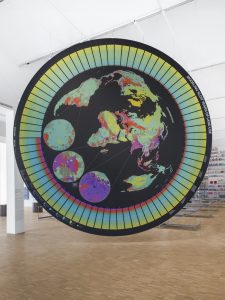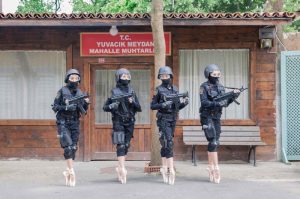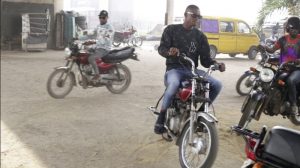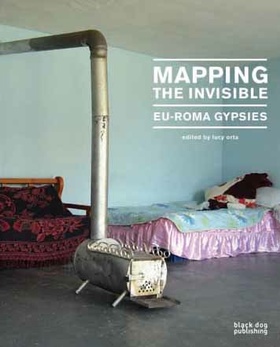 Mapping the Invisible, EU-ROMA Gypsies, edited by Lucy Orta (available on Amazon UK and USA.)
Mapping the Invisible, EU-ROMA Gypsies, edited by Lucy Orta (available on Amazon UK and USA.)
Black Dog Publishing writes: Mapping the Invisible: EU-Roma Gypsies takes the reader on a visual journey across Europe with a focus on its fastest-growing ethnic minority: the Roma. This publication is the result of a unique partnership called EU-ROMA, formed by a group of architects, designers and artists wishing to raise awareness of the diversity and richness of the Roma people. The book shows us the EU-ROMA projects conducted together with the gypsy communities in Romania, Greece, Italy and the UK.
The EU-ROMA partnership was formed as a result of European Community funding, linking the four countries, with the emphasis on an open dialogue on Roma housing issues and public space. The intriguing networks that have been formed were aimed at mobilising and exchanging knowledge and experience from each of the members’ specialist fields in the domain of architecture, contemporary art, urban planning, humanities, sociology and human rights. The outcomes of EU-ROMA form the heart of this book.
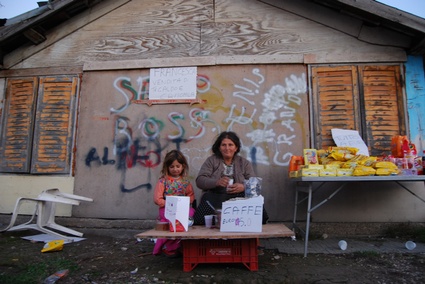 (image)
(image)
I’ve lived in several European countries in the past but never before have i felt so much like a foreigner living in a country where foreigners, other than money-flashing tourists, are not welcome. Still, i’m white and i’m not part of what people here call ‘gli extracomunitari’. My passport says i’m from a country belonging to the European Union. Before its 2004 enlargement to Eastern countries. I guess i’m lucky then. After only a few months spent in Northern Italy, i was shocked by the open hatred that some people around me harbour against gli zingari, the Gypsies. Just so that you get an idea, here’s two posters from the last electoral campaign of the Lega party. They won the elections in Piedmont, the region where i live.
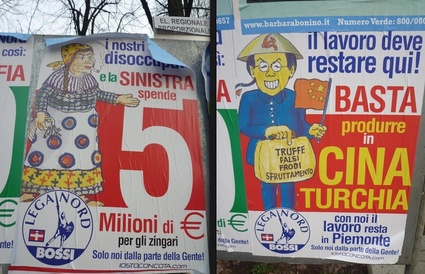
I never paid much attention to Gypsies before i came to live in Italy, they were ‘invisible’ to me. Now i would like to understand who they are and what they have done to deserve distrust and discrimination.
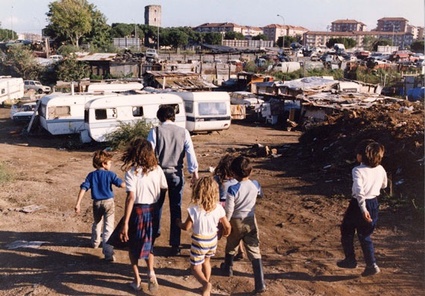 (image)
(image)
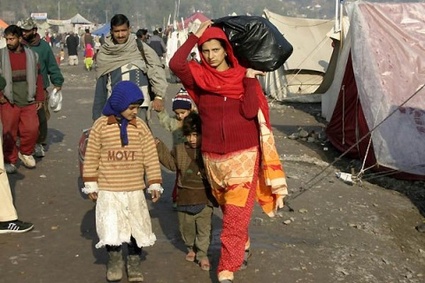 (image from Migranti blog)
(image from Migranti blog)
Mapping the Invisible doesn’t bring all the answers to my questions on a silver platter. After all, getting to know Gypsies is not an easy task. Not only aren’t they the most forthcoming people on earth but in some places, the forces of law and order ensured that the situation remains that way, making it difficult for the authors of this books to communicate with Gypsies and document their life. What most of us are left with is a perception shaped by cultural clichés, authorities and institutions. The book made me realize that the ‘Gypsies/Romani people/Travellers issue’ is even more complex than i expected: they come from different background, follow different traditions, some keep on traveling, others are in search of a stable life, some want to be legal citizens in the country where they’ve been living for generations, etc.
Still, the transcripts of research papers, essays, photos, reports of workshops and artistic interventions, graphics and case studies distributed into chapters titled History Migration, Human Rights, Extreme Poverty, Creative Ingenuity and Family Identity tackle with more depth the issues and controversies that articles in newspapers or photo exhibitions can only cover within a limited space.
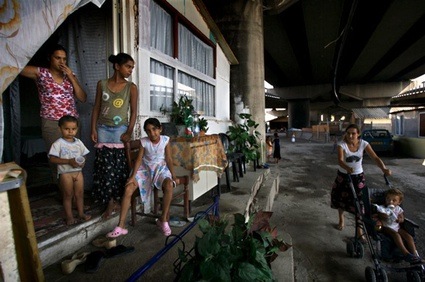 Illegal Roma camp in Scampia built under a motorway in Naples, Italy. Photograph: Robin Hammond
Illegal Roma camp in Scampia built under a motorway in Naples, Italy. Photograph: Robin Hammond
Somehow, i feel that we are all concerned by the fate of the Gypsies. In these times of economical and ecological crisis, Gypsies have much to attract our respect and attention. They were nomads long before it was seen as fashionable to be an always on the move ‘digital nomad’, they constantly recycle and restore, making the most of the resources available and showing flexibility, survival tactics and inventiveness in the face of hardship. Surely, there’s something we could learn from them.
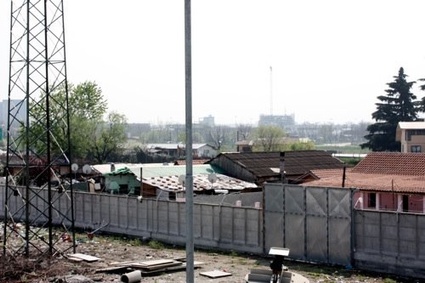 (photo)
(photo)
Gypsies remind us also of some of the most pressing issues of our time: the racial problems in Europe of course but also how it’s easier for goods than for human beings to cross borders, how people who don’t live according to the property-ownership norm need to be stigmatized, etc.
One of the qualities of the book is that it doesn’t try to glorify Gypsies. Nor does it present them under the sole angle of the long-suffering victims (although we should probably be reminded more often that the Nazis submitted them to arbitrary internment, forced labor, and mass murder as well.)
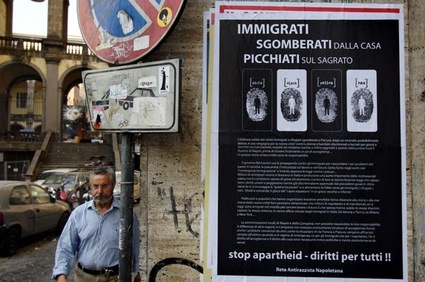 A man walks by an anti-racism poster campaigning against the fingerprinting regime that has been established for Roma Gypsies in Italy. Photo: Robin Hammond
A man walks by an anti-racism poster campaigning against the fingerprinting regime that has been established for Roma Gypsies in Italy. Photo: Robin Hammond
There’s a lot to learn and like about this book. Efficient design, profusion of pictures, the choice of bringing together actors from different fields -from architects to historians, from artists to NGOs- to explore and discuss the issue, a contagious concern and interest for the story of the Gypsies. My sole complain is that i feel that you don’t get to hear a lot the voice of the ‘interested parties’.
Photo on the homepage: Romanian Roma shack shared by several families, Rome. Credit: Robin Hammond.


